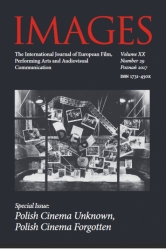Dzieje grzechu, czyli Protokół zbrodni i nieszczęść
The Story of a Sin, or a protocol of crimes and calamities
Author(s): Roman WłodekSubject(s): Theatre, Dance, Performing Arts, Gender Studies, Sociology of Culture, Pre-WW I & WW I (1900 -1919), Interwar Period (1920 - 1939), Film / Cinema / Cinematography
Published by: Uniwersytet Adama Mickiewicza
Keywords: Stefan Żeromski, Sfinks; Polish film; Henryk Szaro; women’s problems;
Summary/Abstract: Stefan Żeromski’s novel, The Story of a Sin (1908), was controversial and considered scandalous at the beginning of the twentieth century. Żeromski was accused of undermining the significance of the family as the basic unit of society. His book, it was said, promoted “free love,” by disparaging Polish women and vividly portraying the moral degradation of the heroine. Theatrical and film adaptations of the novel met with similar charges (Leon Schiller, Polish Theatrical adaptation, Warsaw, 1926). The first film adaptation appeared in 1911, followed by an Italian version in 1917 (La Storia di unpeccato). In 1933, Sfinks, the most honored Polish film studio, produced yet another adaptation for the studio’s 25th anniversary. Such issues as divorce, abortion, single motherhood, and prostitution (topical issues in society and major themes in the book) took a back seat to the film’s criminal motif.
Journal: Images. The International Journal of European Film, Performing Arts and Audiovisual Communication
- Issue Year: 20/2017
- Issue No: 29
- Page Range: 85-102
- Page Count: 18
- Language: Polish

